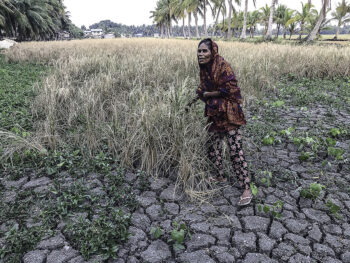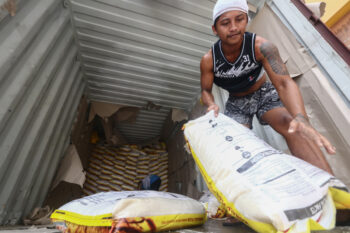(Commissioner Yusuf Morales of the Natonal Commission on Muslim Filipinos wrote this discussion paper which aims to lead towards a framework for stakeholders to engage and participate in PCVE (Preventing and Countering Violent Extremism) initiatives. Some case studies have been inserted for consideration and reflection. The article is a reflection over the recent FES workshop on PCVE and the multiple activities over PCVE and the initiatives in achieving a national framework)
Introduction:
The perception of Violent extremism can also be said to be misperception of violent extremism. This Misperception was reflected in a recently concluded CSO (civil society organizations) workshop, where Violent extremism was used interchangeably with state enforced violence / state- sponsored terrorism, or the use of force. This may be attributed to their institutional memories of Martial law during the martial law era and the mindset of civil society organizations to the concept of state=sponsored repression and persecution. As such any use of illegitimate force is appreciated in the same light. as such terrorism and violent extremism is used in the same manner without actually understanding from a research and a narrative based comparative studies the difference.
Context:
Basically as is always there are no universal definitions of both terrorism and violent extremism, and this creates a different construct and appreciation. But for purposes of layman’s understanding allow us to put basic elements for discussion and understanding.
The concept of terrorism is the inflicting of terror (mentally or otherwise) to the targeted audience with the objective of inflicting a state of fear. This can be done by either the state, non- state actors or even criminal groups. Examples here are state sponsored terrorism of Myanmar against the Rohingyas or the terrorism inflicted by the Narco-Cartels in Mexico and south America both come from extreme poles but engage in a very clear objective, send fear in the hearts of their enemies.
Violent extremism on the other hand is the phenomena wherein individuals or groups undergo a psychological process wherein they arrive at a point where they will engage in violence in the accomplishment of their political or ideological goals. This can be said to be having six elements:
- Anti-state perspective
- Narrow perspective and worldview, reflected by the vertical type of thinking exhibited by many members of VE groups.
- perceived ideological enemies
- Narrative of oppression arising from a series of factors which are push factors.
- Justified use of violence against perceived ideological enemies.
This can be demonstrated in the following organizational examples:
| Elements | Klu Klux Clan inspired groups | Aum shinyo | Al-Qaeda | DAESH affiliated groups |
| Socio-economics | Jewish control over | Corrupt society | Kuffar control | Kuffar control |
| Social anger | All non-whites | Non-followers | Mechanisms of control of the Kuffar | Mechanisms of control of the Kuffar |
| Ideological enemy | All non-whites | Non-adherents | The imperialistic west represented by the US and other western powers | Kuffar
Shia Rafidha Sufis Murtadin Mushrikin Countries supporting them |
| Ideological call | White power | Creation of a theological end state | Transpacific wide Muslim state | Establishment of Daulah Islamiyyah |
| Narrative | Whites are systematically targeted by the jews and non-white peoples | The need to push towards the creation of Asaharas end state
“Aum Salvation plan” |
The Muslim Ummah must unite to defeat the kuffar, this can be done by establishing a global movement against the kuffar to struggle and fight against it and eventually establish an Islamic state | The Muslim Ummah must cleanse its ranks of the murtadin mubtadin and rafidhin, unite to defeat the kuffar and establishing a global movement against the kuffar to struggle and fight against it and eventually establish an Islamic state |
| End-state | White centric state/ fascist state | Pushing towards shoko asaharas ideal end state | Khilafah | Khilafah |
Understanding the different levels of Radicalizations and the push towards violent extremism.
The level of influence is dependent on the level of radicalization of the nexus where they are situated. This is both reinforced by social circles in the radicalization triangles as well as in the social networks online where they are exposed to..
Based on the previous cases investigated there are eight major entry points from wherein radicalization or extremist recruitment comes in:
- Personal circumstances
- Social networks whether virtual or online
- Opportunity for extremists (DAESH) to be the only one propagating the message
- The absence of active counter-narratives to support against DAESH narratives
- Availability of support networks
- Presence of seniors or faculty advisers who encourage them
- An available avenue to express themselves
- A perceived ideological enemy (shias, Sufis, perverts, kuffar, America, etc)
These factors havebeen understood by these extremist recruiters and have in many countries exploited this to gain recruits, albeit unquestioning loyal recruits (Neojihadism and Muslim–Christian Relations in the Mindanao Resistance Movement: A Study of Facebook Digital Narratives. Matteo Vergani.Published online: 09 Apr 2014. http://www.tandfonline.com/doi/citedby/10.1080/09596410.2014.902182?scroll=top&needAccess=trueaccessed 12 November 2016)
Categorization of extremists
Based upon existing case studies, there are four categories of extremists
- Knife sellers composed of ideologues, and extremist preachers, propagators, scholars,
- Operators who are key cadres and perform leadership and ideological roles providing frameworks from which members of extremist organizations may derive their instructions.
- Foot soldiers who normally are cannon fodder and may not even be ideologically shaped but as used for political objectives.
- The ancilliaries who perform support networks to the operations of the extremists which may be from funding, provision of safehouses or even medical support roles where violent extremists seek refuge or hiding.
Operators and foot soldiers are in political extremist parlance, the red area operations of the extremists, the knife sellers and the ancilliaries in actuality are equally as dangerous and form the nesting and breeding ground for recruitment .
Where does multi-stakeholder participation come in:
What is primal for multi-stakeholders is the functional and contextualized understanding of the dynamics of how radicalization happens and how the jump towards extremism happens. There are plenty of functional and operating models, and it would be unfair to be using one singular model but to actually interpolate models.
This means that in order to be fully engage in PCVE activities a functional understanding of PCVE and its definitive forms would be important to understand.
There are five areas for collaboration in PCVE:
- Soft or value-based approaches where programs are aimed at introducing values that will encourage mutual acceptance, inclusivity and respect for differences in opinion, culture or faith and create a situation where individuals would be encouraged to accept these values and approaches.
- Hard or security-centric approaches where we engage law enforcement, security sector and policy offices through capacity-building and training them to be properly equipped in the understanding and addressing the phenomenon of violent extremism.
- Rule of Law approaches would mean the influencing, crafting or creation of policies and legislation from the local to national government levels for programs and support for PCVE programs. These may range from Sangguniang Bayan ordinances providing financial support for locally based PCVE programs to department orders detailing how operational programs on PCVE is implemented like the AFP wide PCVE campaign guidance or the DILG Department Order for the PCVE program management center to legislative measures such as the amendments to the Human security act and Anti-money laundering act.
- Technical approaches involve three elements: researches on PCVE and impact assessments, development of policies and programs based on the researches and assessments taken and technical trainings for all stakeholders in order to have a common framework of understanding PCVE.
- Multistakeholder approaches — the process of consolidating different stakeholders and getting them to participate in a whole of society approach to addressing the threat of violent extremism. This can be from the local peace and order councils, stakeholder and advisory boards or at the national peace and order councils.







